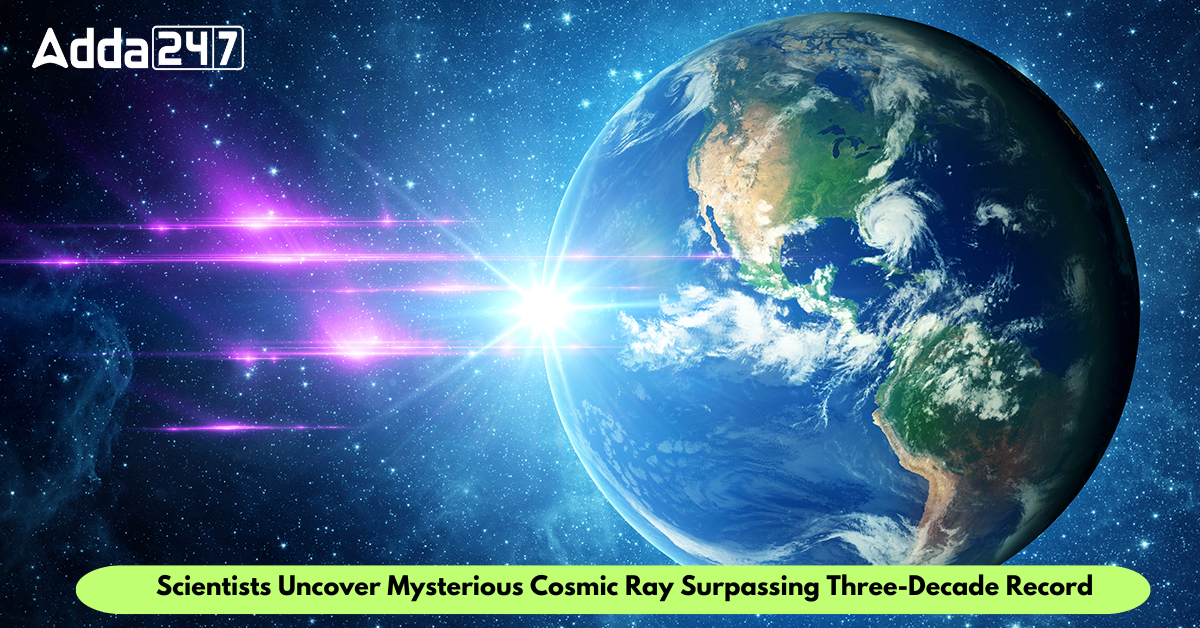Unknown Physics at Play as Powerful Cosmic Ray Stuns Researchers
Scientists have detected a rare and extremely high-energy particle falling to Earth that is causing bafflement because it is coming from an apparently empty region of space. The particle, named Amaterasu after the sun goddess in Japanese mythology, is one of the highest-energy cosmic rays ever detected.
In a groundbreaking discovery published in the journal Science, scientists have detected an extraordinary cosmic ray, marking the most potent such particle observed in over 30 years. With an estimated energy level of 240 exa-electronvolts (EeV), comparable to the record-breaking Oh-My-God particle discovered in 1991, the source and nature of this cosmic phenomenon remain elusive.
Toshihiro Fujii, an associate professor at Osaka Metropolitan University in Japan, said: “When I first discovered this ultra-high-energy cosmic ray, I thought there must have been a mistake, as it showed an energy level unprecedented in the last three decades.”
What is Cosmic Rays?
Cosmic rays, high-energy subatomic particles often in the form of protons, traverse space at nearly the speed of light. Their ultrahigh-energy variants, exceeding one EeV, surpass the capabilities of even the most robust human-made particle accelerators. Rarely spotted, cosmic rays with energies surpassing 100 EeV arrive at a rate of less than one per square kilometer on Earth every century. The energy of cosmic rays is usually measured in units of MeV, for mega-electron volts, or GeV, for giga-electron volts.
As scientists grapple with the puzzle presented by this recent cosmic ray, the quest for understanding these high-energy particles continues. Technological advancements, like those seen with the Fermi Space Telescope, contribute to unraveling the mysteries of cosmic rays, shedding light on the fundamental processes governing our universe. This latest revelation not only pushes the boundaries of cosmic exploration but also underscores the ongoing pursuit of knowledge in the vast and dynamic realm beyond our atmosphere.

Unraveling the Mystery
The origin of this recent cosmic ray, with its staggering 240 EeV energy, raises more questions than answers. Some scientists posit that unknown physics might be at play, introducing an element of mystery to the already enigmatic realm of cosmic rays. While these particles can originate from the Sun, our galaxy, or even distant galaxies, the exact processes leading to their ultra-high energies remain a subject of intense scientific scrutiny.
Cosmic rays, primarily composed of bare nuclei of common atoms, generate secondary particles upon colliding with Earth’s atmosphere. These collisions produce showers of pions, muons, and neutrinos, with the majority deflected by Earth’s protective magnetosphere or heliosphere. The recent discovery’s energy level, at 240 EeV, highlights the immense power these cosmic rays possess, capable of surpassing the kinetic energy of a speeding baseball.
Historical Context of Cosmic Ray
The history of cosmic ray exploration dates back to Victor Hess’s 1912 discovery, earning him the 1936 Nobel Prize in Physics. Initial skepticism about the existence of cosmic rays waned as advancements in technology, such as Wulf electrometers and high-altitude balloon flights, confirmed their presence and increasing ionization rates at higher altitudes.
The Origin of Cosmic Rays and Types
Due to the influence of magnetic fields within the Milky Way Galaxy, primary Galactic Cosmic Rays (GCRs) follow intricate trajectories, arriving at Earth’s upper atmosphere uniformly from various directions. Identifying cosmic ray sources becomes a challenge, as their arrival direction doesn’t provide conclusive information. Instead, researchers must deduce sources based on the elemental and isotopic compositions of atomic nuclei within cosmic rays. This inference involves comparing cosmic ray abundances with those determined spectroscopically for stars and interstellar regions.
Extensive studies of cosmic ray nuclei, spanning energies from approximately 100 MeV to several tens of GeV per nucleon, have provided insights into the abundances of different elements, extending up to uranium. By examining this data, scientists can reconstruct the cosmic ray particles’ journeys through the Milky Way Galaxy. Notably, light elements like lithium, beryllium, and boron, which are scarce throughout the broader universe, exhibit surprising abundance among primary GCRs. This anomaly is attributed to the production of these light nuclei during the fragmentation of heavier primaries (such as carbon and oxygen) in collisions with the sparse interstellar gas, primarily composed of hydrogen.
Cosmic rays come in two primary types: galactic cosmic rays (GCR) originating outside our solar system and solar energetic particles emitted by the Sun during solar eruptions. The term “cosmic ray” typically refers to the extrasolar flux, encompassing a diverse range of particles.




 India’s Deep Ocean Mission Achieves Reco...
India’s Deep Ocean Mission Achieves Reco...
 ISRO Inaugurates Space Laboratory in Rem...
ISRO Inaugurates Space Laboratory in Rem...
 India’s First Animal Stem Cell BioBank I...
India’s First Animal Stem Cell BioBank I...

